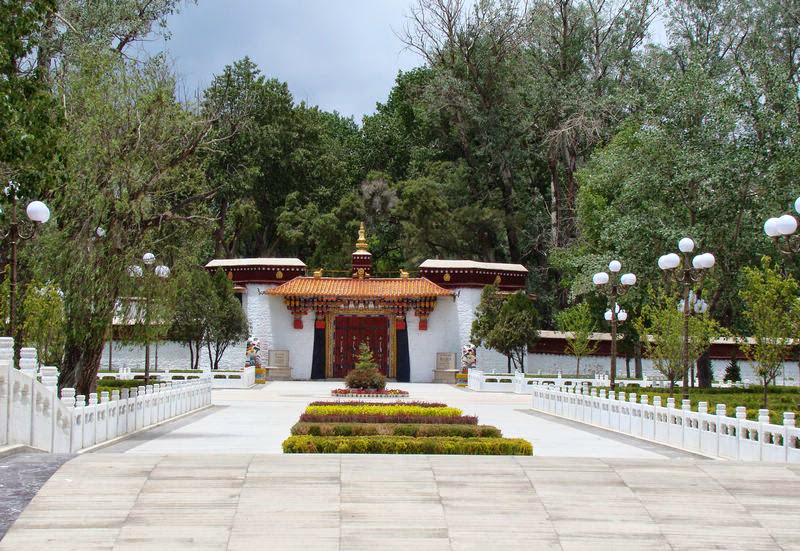By Kristen Moulton, The Salt Lake Tribune
Published: August 19, 2014 08:45PM
Updated: August 18, 2014 01:01PM
Thriving at high altitude, where most mortals suffer from oxygen deprivation? There’s a gene for that.
A study led by University of Utah researchers has identified for the
first time the genetic reason Tibetans can live without medical
complications on the Tibetan Plateau, which has an average elevation of
14,800 feet.
The results of the study, led by senior author Josef Prchal, an
internist and hematologist at the U., were published online Sunday in
the journal Nature Genetics.
By taking blood samples from 26 Tibetans living in Utah and Virginia —
as well as dozens more from Tibetans and other Asians living in China
and India — they found the gene EGLN1 changed by a single DNA base pair.
Lowlanders who lack the genetic mutation suffer in thin air because
their blood becomes thick with oxygen-carrying red blood cells in an
attempt to feed oxygen-starved tissues. That can lead to long-term
complications such as acute mountain sickness or heart failure, Prchal
said.
But Tibetans’ bodies do not react to high altitude by producing extra red blood vessels.
The mutation apparently began 8,000 years ago and “spread like fire”
through the population, he said. Those who had it thrived and, by
natural selection, their offspring did, too.
Today, 88 percent of Tibetans have the genetic variation, but it is
virtually absent in closely related lowland Asians, the study found.
DNA from Chinese, Japanese, Koreans, Mongolians and Filipinos were compared against the Tibetan DNA.
“The significance is … that we understand more about evolution,” said
Tsewang Tashi, a research associate at the university’s Huntsman Cancer
Institute and one of the study’s authors.
Tashi, who was born in India to Tibetan parents, came to the U. in 2012 and was a great help during visits to Asia, Prchal said.
Prchal began the research in 2007, but it was complicated by cultural and political difficulties.
A partnership between Qinghai province in the north of China and the
university, formalized when former Utah Gov. Jon Huntsman was ambassador
to China, laid some groundwork. Prchal was able to do research at the
Research Center for High-Altitude Medicine of Qinghai University and
initial results were published in 2010.
Prchal also was able to meet with the Dalai Lama in Prague, Czech
Republic, and the Tibetan people’s spiritual leader wrote a letter
endorsing the research.
Prchal and the Dalai Lama had a mutual friend — now-deceased Czech
Republic President Vaclav Havel — and that helped, said Prchal, who fled
communist Czechoslovakia in 1968.
Tashi knew the culture and language and could help Tibetans
understand the research, Prchal said. Tashi also recruited Tibetans
living in Utah and Virginia to donate their blood for DNA testing.
Pema Chagzoetsang, who was just 10 months old when her parents fled
Tibet over the Himalayas in 1959 to escape the communist regime in
China, was one of those donating her blood for the study. A program
specialist for the state homeless program, she also recruited other
Tibetans living in Salt Lake City.
Chagzoetsang draws a political implication from the research. “We are
all saying we are not Chinese, and this proves it,” she says.
Prchal is thinking more along medical lines. “This mutation is
extremely important because it regulates many functions in the human
body,” he said.
It might have implications for cancer research, and also for diabetes
or high blood pressure at low elevations. One of the study’s authors,
U. endocrinologist Donald McClain, for instance, continues to research a
connection to obesity and diabetes.
“There’s much more to be learned,” Prchal said.
A “huge amount of credit,” he said, goes to Felipe Lorenzo, a
research associate in the hematology department at the U., who found the
genetic mutation in 2011 after considerable effort.
After that, collaborators in Finland were able to figure out the function of the mutation, he said.
The research finding likely will be no surprise to the scientific community, Tashi said.
“Polar bears thrive in the north and camels thrive in the desert,” he
said. “It’s the same with human beings. We’ve evolved to our own
habitat and environment.”
Such research will become more difficult in future years because of the worldwide dispersal of distinct populations, he said.
visit details at
http://tourintotibet.com/aug-19-why-tibetans-fit-for-heights-on-tibet-plateau/


















































